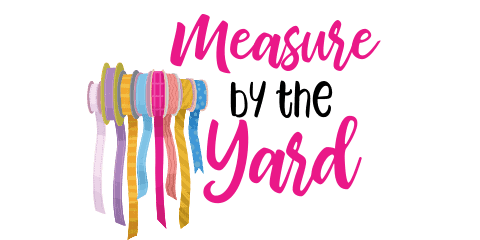Deciding to add embroidery on a piece of fabric will undoubtedly add to its beauty and quality. While it is a generally simple task, it is essential to know the basics for creating quality embroidery.
One aspect of good embroidery technique includes knowing the right type of needle and thread to use. With the varieties of embroidery threads and needles available, things can get confusing.
This article explains how far you can go with different needles and threads to create quality embroidery. We also touch on the use of regular needles and threads in embroidery.
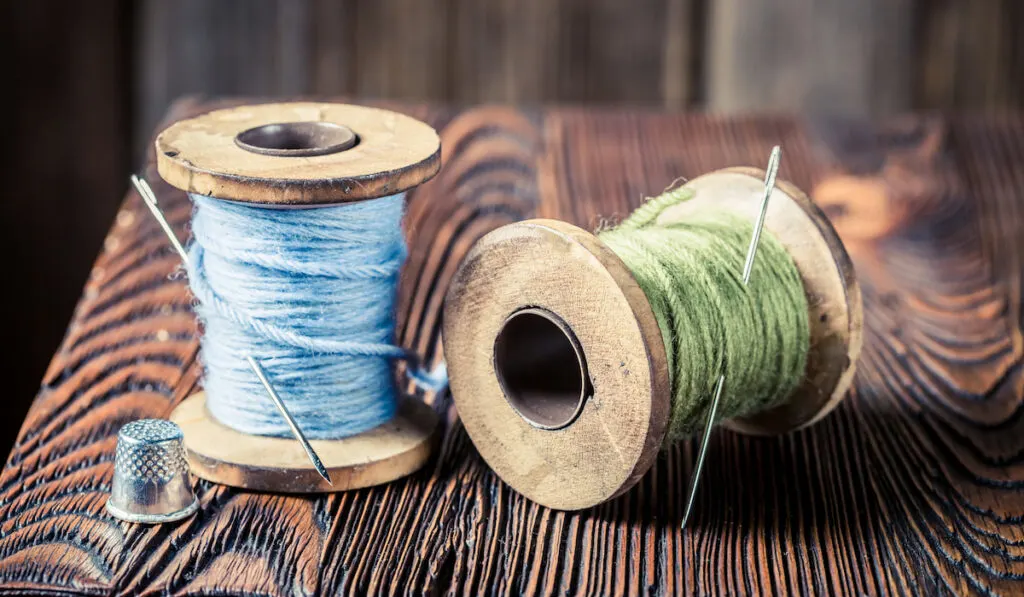
Can You Use Regular Needle to Embroider?
Embroidering can be considered a unique type of sewing. Special types of thread and needles are used to embroider efficiently and effectively.
However, this is not to say the regular kinds of sewing needles cannot be used, especially when there is little or no alternative.
The major difference between various types of needles is the needle eye’s size and the needle scarf.
Needles designed primarily for embroidery have wider eyes. These eyes give enough room for the thread, thereby preventing fraying or breakage.
With less intensity on the embroidering thread, the larger needles achieve increased production and easier delivery.
Can You Use Regular Sewing Thread for Embroidery?
For you to sew properly, it is important to get the right kind of thread.
Embroidery requires that you use stronger threads to bring out the embroidered design effectively. Thus, embroidery threads, or floss, are typically used in place of regular thread.
Embroidery threads are softer than regular ones, so they are easier to maneuver. They come in sizes between 30 and 60, with 40 being the most commonly used size.
There are several kinds of threads specific to embroidery. However, if you are stranded, you will find that regular threads will suffice for this process.
A drawback of regular sewing threads is that they are much lighter than the embroidery type.
When using a regular thread for embroidery, it is advisable to use more strands to achieve a finer, thicker effect.
There may will be overlapping as regular threads will not come out flattened on the fabric like embroidery threads.
Doubling or tripling the strands of a regular thread can achieve an effect close to that of embroidery thread on fabric.
Types of Thread Commonly Used for Embroidery
1. Rayon Thread
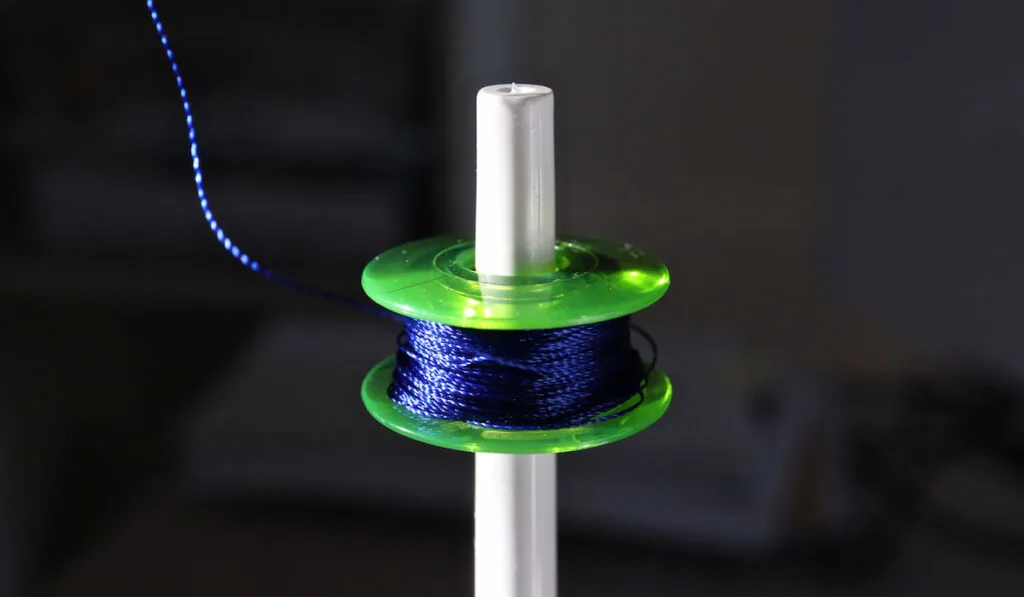
Rayon thread is the most widely used thread for embroidery. This is a thread created with bright colors and a sheen that leaves a beautiful effect on fabrics.
The embroidery floss of rayon thread unarguably remains one of the shiniest. This thread provides a speedy embroidery process without much breakage or frays.
Rayon thread adds a beautiful perspective to fabrics, and the various colors in the pack add a color spectrum effect.
The downside of this thread is the difficulty that arises in its usage.
Rayon thread is better used in short lengths because the thread easily gives room for knots and entanglements. Shorter sizes will reduce the possibility of the knots occurring while sewing with it.
Another way to ease sewing with rayon thread is to dampen the thread before using it.
You can do this by dipping the thread in water, sprinkling water over, or rubbing wet clothing over the thread.
When it comes to thread sizing, the standard size of a rayon thread is 40 wt. However, you may find it in a thicker size of 30 wt.
2. Polyester Embroidery Thread
Polyester embroidery thread is quite common and affordable.
This thread is highly recommended for children’s clothing because it has a high level of protection from shrinkage, fading, or bleeding.
Polyester embroidery thread has strong protection from bleaching, even against chlorine solution. The polyester thread gives an effect close to that of rayon, and it is also produced in varying colors.
Like rayon thread, polyester embroidery thread gives little room for breakage and frays. The sheen of polyester is, however, not as high as that of rayon thread.
These two threads are interchangeable and can serve as alternatives to each other.
3. Cotton Embroidery Thread
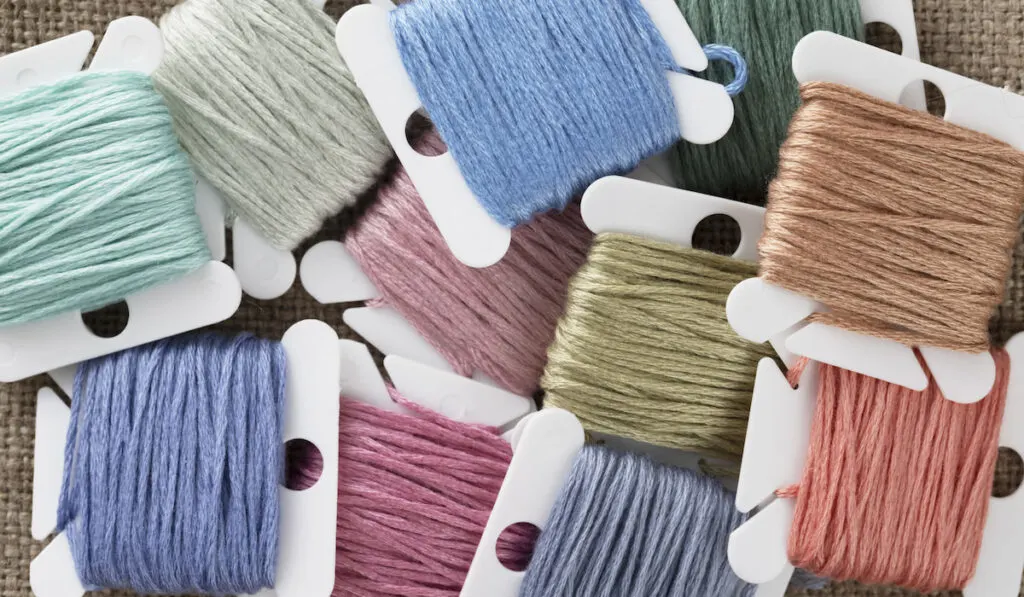
Cotton embroidery thread, also called embroidery floss, is more commonly used on an embroidery machine because it is easy to thread and provides enough coverage.
The cotton thread sizes range from 30-50 wt. and up to 100 wt., depending on the thread’s strength and coverage.
This thread may readily be looked upon for hand embroidery. However, it has a beautiful sheen, and it is strong enough to avoid overlapping when used for embroidery.
4. Silk Thread
It is accurate to refer to silk thread as a luxury thread. Silk thread produces one of the most luxurious looks on silk or any high-quality fabric it is used on.
One of the benefits of silk thread is that it absorbs dye easily. Also, its strength and stability do not give room for breakage or fraying.
This thread exists in sizes between 30 and 50 wt., and it is preferable as a machine embroidery thread.
Silk thread has some setbacks including its costliness, ease of fading or bleeding, and relative scarcity.
For a better, beautiful, and long-lasting sheen, silk thread should be pressed with moderate steam from behind the fabric.
5. Ribbons
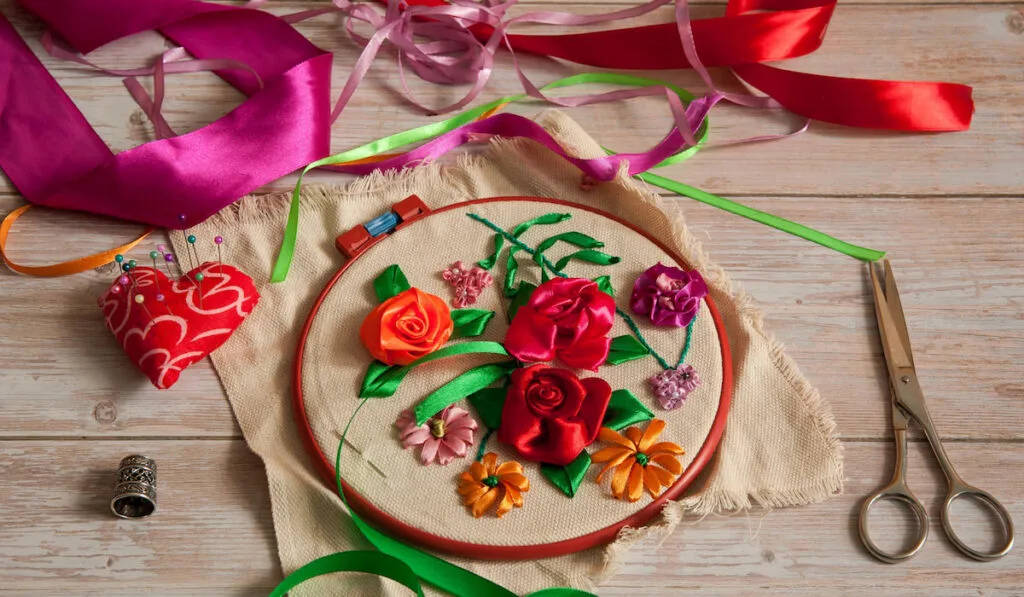
Ribbons, though not threads, can be used for embroidery just like other embroidery threads.
As long as you have a needle with an eye big enough for ribbon, you can embroider with them as usual.
6. Knitting or Crochet Yarn
Though crocheting can be done with almost any kind of thread, a yarn exists specially for crocheting. This is the same for knitting as both needle crafts are very similar.
This fiber gives an amazing look and colorful effect to whatever fabric it is used.
You can use crochet thread to make different designs, and the output will be just as desired.
7. Sashiko Thread
Sashiko thread is popularly used in Japan for embroidery. The strands of a Sashiko thread are typically 3-5 times heavier than normal embroidery thread.
The thickness of Sashiko thread makes it more special and durable than other threads and commonly finds application in clothing repair.
Sashiko thread can be used with a needle that has an eye big enough for the thread. The good news is there’s a needle specifically made for this type of thread.
8. Special Effect Embroidery Thread
As the name implies, this is a kind of thread that is produced with special characteristics. These effects range from glitter, to glow-in-the-dark, to fuzzy acrylic-like effects, to fluorescence.
This kind of thread is recommended for embroidery because it will give a unique effect to the embroidery design.
9. Bobbin Thread
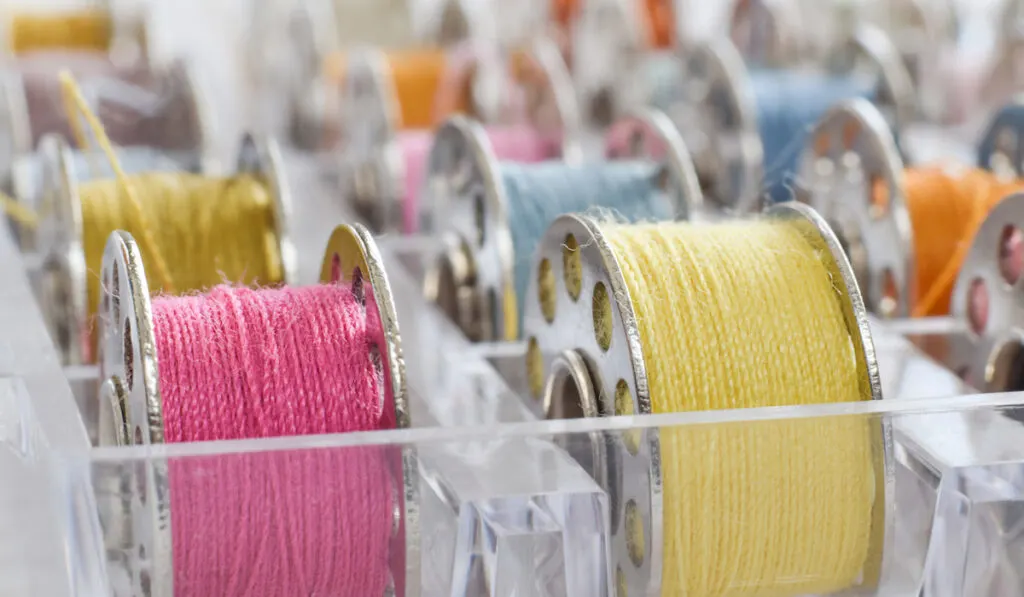
Bobbin threads are best used on embroidery machines because of their ability to withstand the mechanical strain of stitching.
Bobbin thread is strong, has a fine sheen, and provides a beautiful outlook on a fabric. Like many others, bobbin thread comes in several weights is best used with needles of similar weight.
10. Perle/Pearl Thread
Perle, or pearl, thread has two strands twisted into one. When using this thread, leave it untwisted as the thickness produces a beautiful look on the fabric.
Pearl thread is heavier than cotton thread comes with their specific weight indicated on the pack. The higher the number, the less weighty the thread.
The texture of pearl thread makes it a good choice for redwork, Hardanger embroidery, and cross-stitching.
11. Crewel Yarn/Wool
Crewel yarn is a natural type of wool with an acrylic effect and is best used in hand embroidery. You can use crewel yarn for wool stitching, cross-stitch, tapestry, and needlework.
12. Felted Wool Yarn
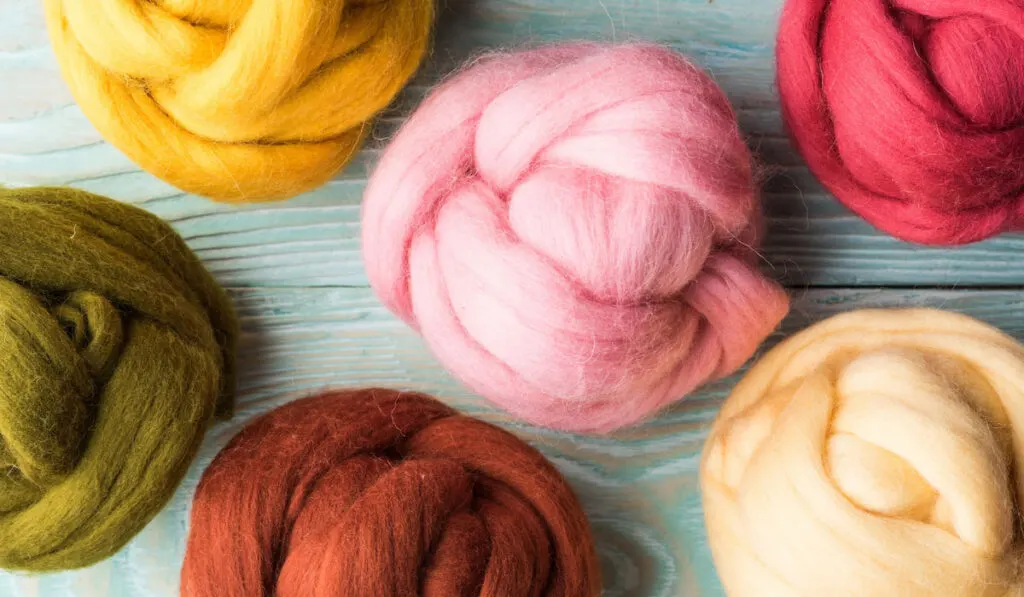
Felted wool has the special characteristic of being 100% wool. This kind of thread undergoes a process called felting to produce a fuzzy texture. You can use felted wool for couching while embroidering.
Types of Needles Commonly Used for Embroidery
Just like thread, needles used in embroidery vary greatly from one another depending on the project and materials they are designed for.
Needles are expected to have specific properties that make them ideal for use.
Needles typically have numbers that work as descriptors. The higher the number, the finer the need.
You will generally want to use a needle that is not overly thick. This way, you will not need to worry about leaving holes in your fabric.
You should also look for a needle that you can thread and push through fabric easily.
Many needles are available with gold plating. These are suited for people with nickel allergies and or whose body oils discolor needles. The gold coating wears off with use, and the needles should be replaced over time.
1. Crewel Needles
Crewel needles, also called embroidery needles, are the most commonly used needle type.
They are of medium size and have a long narrow eye, through which you can pass multiple strands of thread.
Crewel needles come in sizes 1-12, but the most popular are 6-8. This needle is usually used for surface embroidery, and you may also employ it in crewelwork.
2. Tapestry Needles
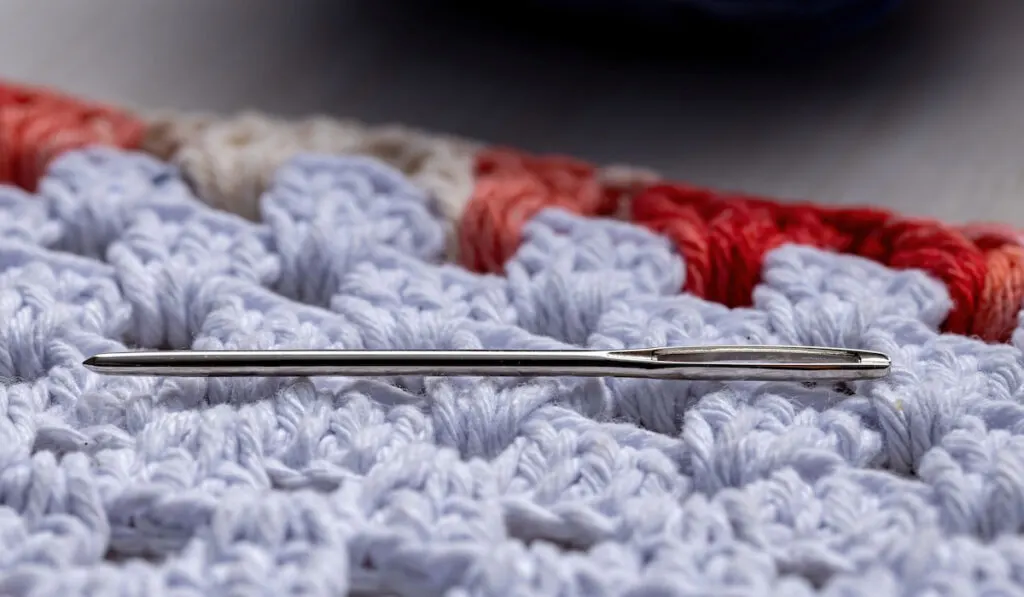
Tapestry needles have a dull or blunt point that distinctly goes through the fabric without breaking the threads.
Also called ballpoint needles, tapestry needles have a large oval eye and are easy to thread.
The sizes of tapestry needles range from 13-28. They are commonly used for needlework embroidery.
Particularly, they are used to cross-stitch on Aida fabric. They are also used for counted thread embroidery.
3. Chenille Needles
Chenille needles are a mix between the crewel and the tapestry needles. They have large eyes but also sharp points that make them ideal for working on coarse fabrics.
Chenille needles also come in the same size range as tapestry needles.
They are used for crewelwork as well as wool work. Chenille needles are sometimes preferred when using metallic threads.
4. Milliner Needles
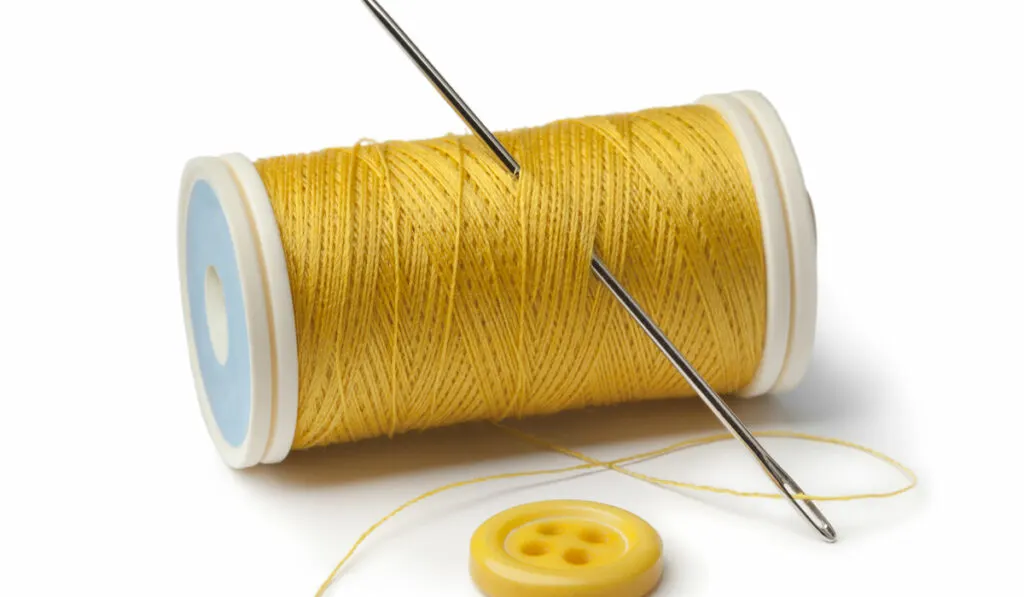
Milliner needles get their name from their heavy use by milliners, or hat makers.
They are long and thin with a sharp point, and their shaft is almost the same size as that of the eye.
They are useful in making stitches where the needle is wrapped by the thread many times. Such stitches include decorative stitches like French or Bullion knots.
Milliner needles also find use in Brazilian and ribbon embroidery. They may also be called straw needles, and they come in numbers 1-10.
5. Beading Needles
Beading needles are particularly thin and are used to incorporate beads in your embroidery.
The slenderness of beading needles allows you to pass them easily through beads easily.
Beading needles are made from fine steel wire and come in sizes 10-15.
Beading needles are very long, and this allows them to accommodate many beads. However, it leaves them prone to bending out of shape.
6. Darning Needles
Darning needles are long with a sharp, curved tip that makes it easier to pick up stitches. They are used for darning and doll making.
Can You Use Regular Thread in an Embroidery Sewing Machine?
You can use a regular thread in your embroidery machine to very satisfactory results.
However, you may find the thread all piled up in the embroidery machine. You may also experience more thread breaking with regular thread.
This happens because the regular thread does not flow through the machines as well.
While it is acceptable to use it, it may be better to use a regular thread only for emergencies.
Resources
- https://blog.treasurie.com/embroidery-basics/
- https://sewguide.com/hand-embroidery-thread-types/
- https://www.thesprucecrafts.com/needles-for-embroidery-1177599
- https://sewingiscool.com/can-i-use-regular-thread-in-my-embroidery-machine/
- https://www.thesprucecrafts.com/embroidering-with-sewing-threads-4057284
- https://www.thecreativefolk.com/best-embroidery-needles/
- https://tigleytextiles.co.uk/top-5-needles-for-hand-embroidery/
